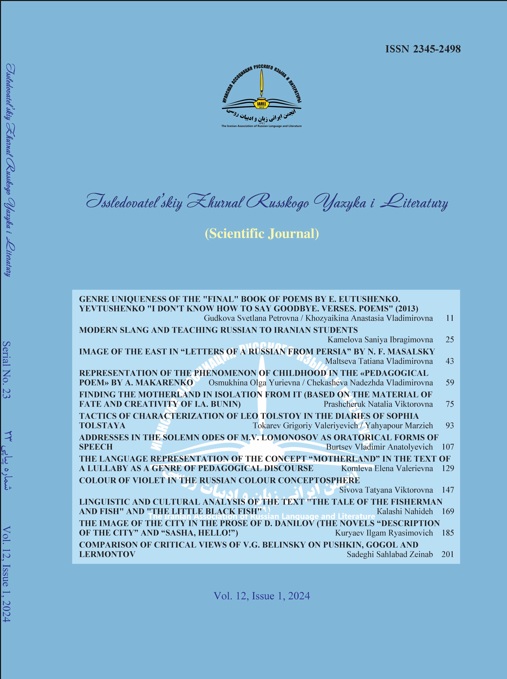FINDING THE MOTHERLAND IN ISOLATION FROM IT (BASED ON THE MATERIAL OF FATE AND CREATIVITY OF I.A. BUNIN)
DOI:
https://doi.org/10.61186/iarll.23.5Keywords:
I.A. Bunin, Emigration, Russia, Isolation, Loss and Finding of the MotherlandAbstract
The article examines Bunin's prose of the 1920s and 40s in the aspect of the writer's changing attitude to Russia in isolation from it. After 1917, Bunin experienced the irretrievability of what had happened ("Cursed Days", "Name Days", "Penguins", "Mad Artist", harsh journalism). This position is most concentrated in the story "The End": "Russia is over." Since the early 1930s, burning pain has been replaced by humility and acceptance of the fact. Russia does not exist – but the memory of it is alive, and Russia belongs to the eternal world of culture. The artist returns her authentic image, "metaphysically enlightened" ("Wanderings", "Arsenyev's Life"). Bunin perceived the Nazi attack on the Soviet Union as a terrible ordeal for the Russian people. The features of Sovdepia have been erased, and Bunin finds his Motherland anew – no longer as a symbolic space in culture, but as a truly existing one. In such circumstances, he creates "Dark Alleys" – a book about love and a book about Russia.
Extended abstract:
Ivan Bunin, the Nobel Prize-winning Russian writer, was forced to leave his homeland after the Bolshevik Revolution of 1917. Bunin's exile from Russia lasted until his death in 1953, and during this period, he experienced a range of emotions towards his motherland. This article will analyze Ivan Bunin's changing attitude towards Russia during his forced isolation from it. Bunin's initial reaction to the loss of Russia was one of shock and disbelief. He had always been deeply attached to his homeland and its culture, and the sudden collapse of the Tsarist regime left him feeling disoriented and lost. In his early works, such as "The Village" and "The Gentleman from San Francisco," Bunin depicts a Russia that is disappearing before his eyes, a land of beauty and tradition that is being destroyed by the forces of modernity. As time went on, however, Bunin's attitude towards Russia began to change. He came to accept the demise of his homeland and even found a certain beauty in its destruction. In his later works, such as "Dark Avenues" and "Cursed Days," Bunin portrays a Russia that is gone forever, a land of memory and longing that exists only in the imagination. Bunin's compositional and stylistic techniques played an important role in reproducing the dreamlike and real pictures of lost Russia. He used vivid imagery and lyrical language to create a sense of nostalgia and longing for a world that no longer existed. His metaphysically enlightened image of the motherland in his later works was an attempt to reconcile the loss of Russia with a belief in its resurrection after its way of the Cross. Bunin's fear for Russia's fate during the Nazi attack on the Soviet Union was a turning point in his attitude towards his homeland. He realized that, despite its flaws, Russia was still his motherland, and he felt a deep sense of responsibility towards it. In his letters and essays from this period, Bunin expresses his hope that Russia will survive the war and emerge stronger than ever before. In conclusion, Ivan Bunin's changing attitude towards Russia during his forced isolation from it was a complex and multifaceted process. He went from shock and disbelief to acceptance and even found a certain beauty in its destruction. His compositional and stylistic techniques played an important role in reproducing dreamlike and real pictures of lost Russia, and his metaphysically enlightened image of the motherland in his later works was an attempt to reconcile the loss of Russia with a belief in its resurrection after its way of the Cross. Despite his exile, Bunin felt involved in the ordeal that had befallen his homeland and believed in its eventual resurrection.
Downloads
Published
How to Cite
Issue
Section
License
Copyright (c) 2024 Issledovatel'skiy Zhurnal Russkogo Yazyka I Literatury

This work is licensed under a Creative Commons Attribution 4.0 International License.
![]()
"Creative Commons Attribution 4.0 International (CC-BY 4.0)"


